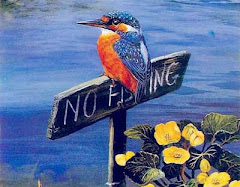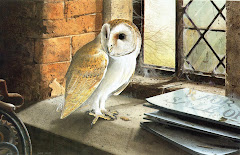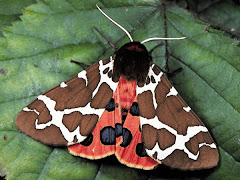
Morus (bot.)
Mulberrybush, silkworm mulberry (Eng.)
Maulbeerbaum (Duits)
Mûrier (Frans)
Moraceae - moerbeziefamilie
De moerbei is één van de bijzondere bomen die we
in tuinen kunnen aantreffen. Omdat zij zeer oud kunnen
worden (500 jaar of ouder) komen er op oude
boerenerven en in kloostertuinen nog zeer oude
exemplaren voor. Hoe ouder de boom is, hoe grilliger
en schever de groeiwijze wordt.
Herkomst
De moerbei is een oude cultuurplant in
Oost-en West-Azië. De bladeren van de witte moerbei
zijn namelijk het favoriete voedsel voor de zijderups is.
Zijde was in China ooit één van de belangrijkste
exportproducten.
Ook in Zuid-Europa werd hij voor dit doel geteeld.
De vruchten zijn eetbaar en bijzonder smakelijk
en worden veel gebruikt in gebak en wijnen.
Ook is er een uitstekende jam van te maken.
De vruchten van de zwarte moerbei
(van nature voorkomend in Zuidwest-Azië)
en de rode moerbei (van nature voorkomend
in oostelijk Noord-Amerika) hebben de beste smaak.
De rode moerbei had aan het begin van de twintigste
eeuw ook een relatief grote spreiding in Nederlandse
tuinen. De rijpe vruchten, bevatten aanzienlijke
hoeveelheden resveratrol, dat ook in druiven
voorkomt en waarvan beweerd wordt dat het
goed is tegen kanker en hart- en vaatziekten.
Van de rijpe vruchtjes kun je jam of wijn maken.
Sommige mensen eten de bladeren gestoofd
als groente of voeren hen aan het vee.
Van het hout worden hockeysticks, tennis – en
badmintonrackets of meubels vervaardigd.
In China gebruikt men de bast voor de papierfabricage.
De takken kunnen als bindmateriaal of voor het
vlechten van manden gebruikt worden.
Het sap van de vruchten zou helpen bij de
bestrijding van tumoren, astma, bronchitis,
hoofdpijn, epilepsie, slangenbeten en brandend maagzuur.
Morus is a genus~of flowering plants in the family Moraceae.
The 10–16 species of deciduous trees it contains
are commonly known as Mulberries.
They are native to warm temperate and subtropical
regions of Asia, Africa, Europe, and the Americas,
with the majority of the species native to Asia.
Mulberries are swift-growing when young, but soon
become slow-growing and rarely exceed 10–15 m
(33–49 ft) tall. The leaves are alternately arranged,
simple, often lobed, more often lobed on juvenile shoots
than on mature trees, and serrated on the margin.
The fruit is a multiple fruit, 2–3 cm (0.79–1.2 in) long.
The fruits when immature are white or green to pale
yellow with pink edges. In most species the fruits are
red when they are ripening turning dark purple to
black and have a sweet flavor.
The fruits of the white-fruited cultivar of the
white mulberry are green when young and white
when ripe; the fruit in this cultivar is also sweet
but has a very mild flavor compared
with the darker variety.
The nursery rhyme Here We Go Round the
Mulberry Bush uses the tree in the refrain, as
do some contemporary American versions of
the nursery rhyme Pop Goes the Weasel.
And to Think That I Saw It on Mulberry Street is
a children's book written by Dr. Seuss.
First Verse:
Here we go 'round the mulberry bush,
The mulberry bush, the mulberry bush.
Here we go 'round the mulberry bush,
So early in the morning.
This is the way we wash our clothes,
Wash our clothes, wash our clothes.
This is the way we wash our clothes,
So early Monday morning.
This is the way we iron our clothes,
Iron our clothes, iron our clothes.
This is the way we iron our clothes,
So early Tuesday morning.
This is the way we mend our clothes,
Mend our clothes, mend our clothes.
This is the way we mend our clothes,
So early Wednesday morning.
This is the way we sweep the floor,
Sweep the floor, sweep the floor.
This is the way we sweep the floor,
So early Thursday morning.
This is the way we scrub the floor,
Scrub the floor, scrub the floor.
This is the way we scrub the floor,
So early Friday morning.
This is the way we bake our bread,
Bake our bread, bake our bread.
This is the way we bake our bread,
So early Saturday morning.
This is the way we go to church,
Go to church, go to church.
This is the way we go to church,
So early Sunday morning.



































2 opmerkingen:
en in het servisch heet het dud(doed)Je ziet ze hier best wel veel maar het nadeel van de rode en zwarte is dat je enorme vlekken op de bestrating krijgt en er komen veel bijen en wespen opaf. gr. Cisca
Hoi Cisca
welkom op mijn blog!
bijen en wespen heb ik nog niet extra veel gezien, en de bestrating rondom de boom heb ik niet waar ie staat...hij staat bij ons naast het kippenhok, dus veel zal opgegeten worden waarschijnlijk!!! hahhaa
maar bedankt voor de info...
Een reactie posten